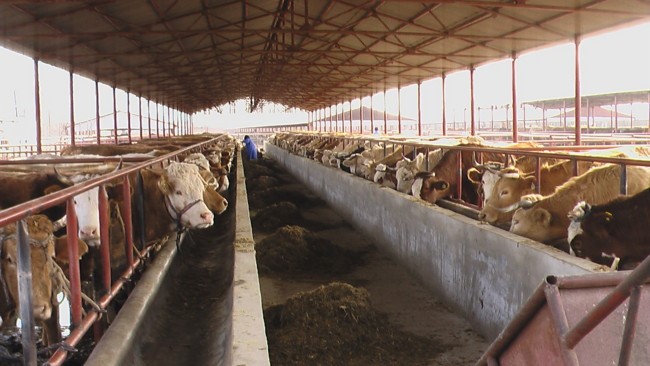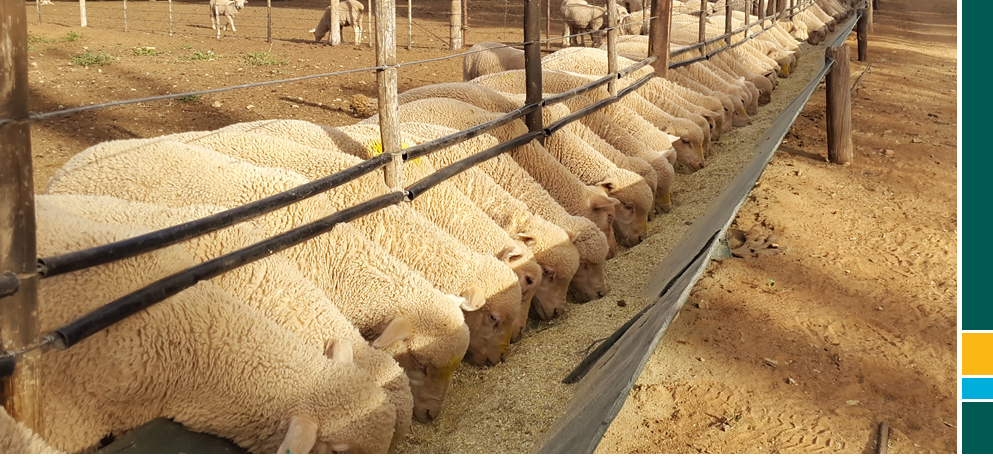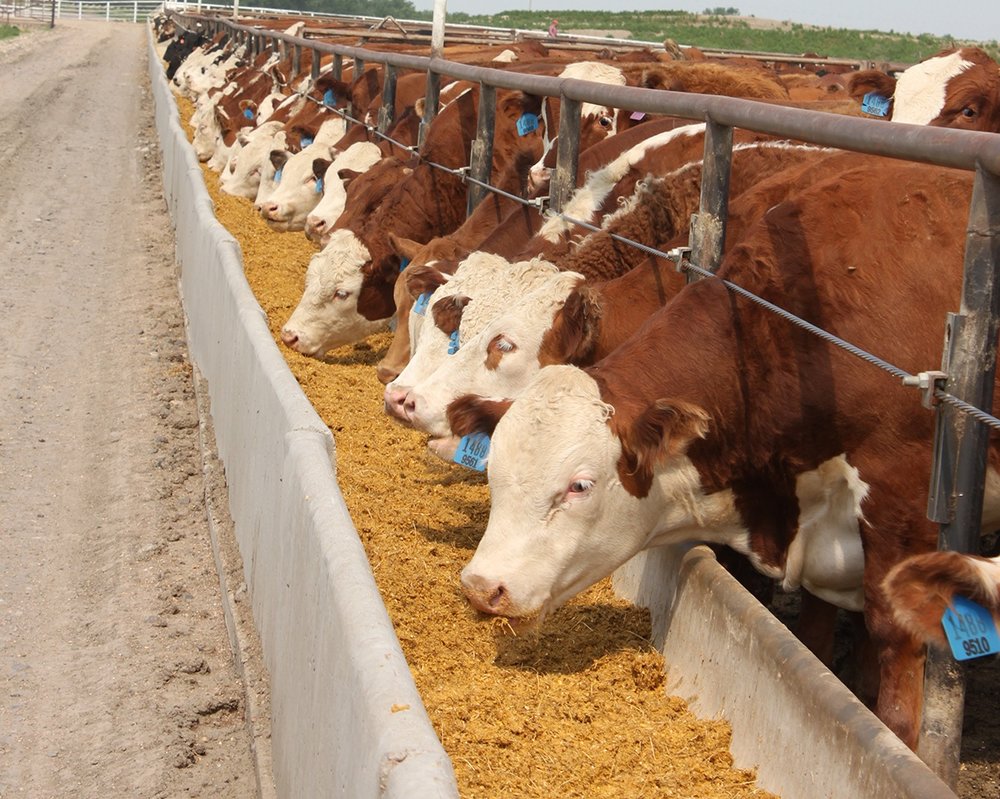Any feedlot consists of a range of different feeding bunkers and loading points for those bunkers. Most commonly feedlots will have a range of cattle at different stages of development and health, therefore, requiring different amounts and types of feed. These different groups of cattle are normally grouped together, like by like, to ensure that each group’s specific dietary needs are met.
For instance, in most feedlots, young cattle arriving at the lot will be fed on a diet consisting of roughage only for a week or two to kick start the weight gaining process. As the cattle settle into their routine of feeding their dietary needs will change and so will the amount of feed needed in order for them to maintain a steady weight gain.
The purpose of the feedlot is to quickly, and cost-effectively fatten cattle to a point where their body mass and fat content reaches the levels required by the market. It is therefore very important for the feedlot operator to be able to effectively adjust feed blends and amounts, when needed, to the different groups of cattle within the different loading bunkers.
To determine the needs and dietary requirement of each feed bunker and load point most feedlots will employ a scoring system whereby the amount of feed needed as well as the blends required in each feedlot can be effectively measured and regulated. It is therefore critical that we must be able to differentiate between the different feed bunkers and feed loading points in order to ensure that the correct amount and type of feed is delivered to the correct feed bunker at the correct time.
This knowledge of the different feed bunkers and loading points within the feedlot is, therefore, a critical part of the successful operation of the feedlot and workers loading feed into the feed bunkers must therefore be fully conversant on the different locations of the different loading points.
Feedlots most commonly will have different loading points for feed destined for different bunkers. The person responsible for the collection and distribution of the feed to the bunkers must therefore be fully aware of where the food required for the specific bunkers that need to be refilled must be loaded. Where only the three main blends namely a starter blend, a growth blend and a finisher blend have used the implementation of a colour-coded system seems the best way to ensure that the correct feed goes to the correct bunkers.
When designing and developing a colour scheme the loading points containing the different feed blends should be colour coded. The same colour code should then be used on the feed bunker cards to ensure that the driver of the tractor delivering the feed to the feed bunkers can easily check and ascertain that the correct feed is going to the correct bunkers.
Loading Feed in the Correct Sequence
Most cattle lots consist of a large range of feed bunkers with, as we discussed earlier, a range of different cattle groups at different stages of development with different dietary needs.
In order to ensure profitability, a feedlot must be managed in such a manner that processes such as cleaning and loading of the feed bunkers are done on a continuous basis to ensure that staff employed at the feed bunker remains as productive as possible.
This means that some feedlots have started to move away from the once-daily morning feeding that has become common practice in most feedlots in South Africa to a more regular daily feeding time fitting into the production and cleaning schedule. There still also are cases where animals need to be fed twice daily, especially during the starting period and during the summer months.
As we will discuss later cleaning of the feed bunkers needs to be done daily and this necessitates the emptying and refilling of the bunkers. It, therefore, makes sense for the feedlot manager to schedule the distribution of feeds to coincide with the refilling of the bunkers after cleaning.
Loading the feed to be distributed in the correct sequence to ensure that bunkers are refilled directly after cleaning; therefore, becomes very important. The persons responsible for the refilling of the feed bunkers, the tractor drivers and the load pint operators, must be fully versed with the cleaning schedules of the various bunkers and ensure that feed are timeously loaded and distributed in the correct sequence.
Loading The Correct Ingredients
As we discussed earlier in the guide it is important that the correct amount of feed is delivered to the correct bunker. The driver of the tractor used to load the feed bunkers must therefore be fully aware of the amount of feed required to perform the task.
The common practice is to load the feed wagon or truck only with the correct load size or amount of mixed feed necessary to refill the section of feed bunkers in question. A driver will therefore only load enough feed to complete the section and return to the loading bay to reload for the next section of bunkers. This practice ensures that the correct amount of feed is delivered to the correct bunkers. It eliminates the likely hood of overfeeding and therefore spoilage of feed.
Different feed bunkers will be stocked with different groups of cattle. This practice means that not all feed bunkers will receive the same amount or blend of feed and therefore the management of the feeding process, starting by managing the loading of the distribution wagon or trailer, are another important step in assuring that the different groups of cattle are fed according to their specific needs.

As with the distribution of the feed to the bunkers, it is also important that the correct feed mixes are supplied to the correct bunkers. To ensure this a system of bunker management in which bunker charts are used must be designed and employed. Each bunker chart must correctly identify the group of cattle within the feed bunker and their dietary needs.
The driver loading the bunker should always then double-check that he has loaded the correct feed ingredients for the specific bunker as it is specified on the bunker charts. Feeding the incorrect blend of ingredients to the wrong group of cattle can lead to major financial losses for the feedlot.
Distributing the Feed
 |
 |
Feedlots are most often designed in such a manner that feed bunkers are filled by using a tractor. The tractor will pull a trailer that slowly and evenly discharges the feed into the feed bunkers. This simple operation though can be another determining factor in the success of the feedlot as the speed at which the tractor is driven determines the amount of feed distributed to each feed bunker.
As with all other operations within the feedlot, it is important that the tractor operator is fully trained and made aware of his responsibilities and the consequences of him or her not performing their tasks to the best of their abilities.
The tractor speed should always be kept constant at the specific speed required to deliver the correct amount of feed to the feed bunker in question to ensure an even spread of feed within the feed bunkers and that the correct amount of feed is delivered at the correct bunkers.
In large feedlots feed is usually distributed to the feed bunks with a mixer truck or feed wagon. Loading feed from a mixing trench is accomplished with a front-end loader. The loader scrapes a slice of feed and loads the feed into a mixer feed truck or wagon. With a reasonable amount of care and attention during this process, losses can be minimised.
The most common way of ensuring that the correct amount of feed is supplied to the correct bunkers is by adjusting the speed of the tractor supplying the feed to the different bunkers. The speeds used by the tractors differ greatly from feedlot to feedlot and is dependent on the design of the feedlot and the distribution method used by the feeding wagon or trailer. It is therefore critical that the feedlot manager determines the different speeds necessary and unique to the feedlot to ensure that the right amount of feed is distributed to each feed bunker.
As a general rule the faster the tractor drives the less feed will be added to the feed bunkers and vice versa. It is critical though to remember that feed must always be distributed evenly throughout the bunker to allow all the cattle in the pen to have equal access to the right amount of feed. The training of tractor operators and ensuring that they have the necessary understanding of their roles and responsibilities is therefore of cardinal importance.
This is a critical part of ensuring the success and ultimate profitability of the enterprise and must therefore be given the necessary attention. The operation and success of a feedlot are dependent on doing a number of small things well, you can have the best feed and best and most modern feed bunkers but without the correct loading of the correct feed at the correct time, you will not be successful.